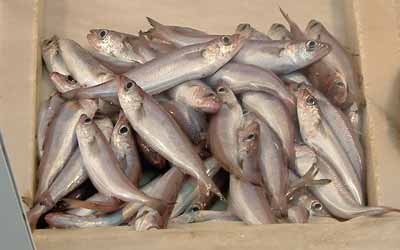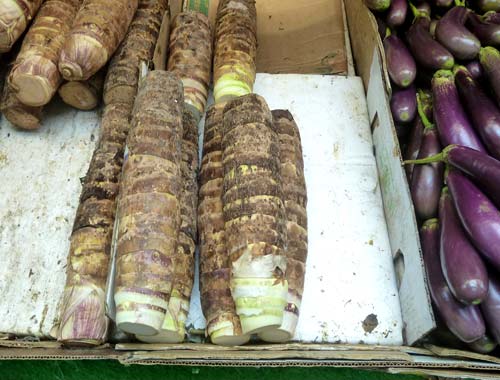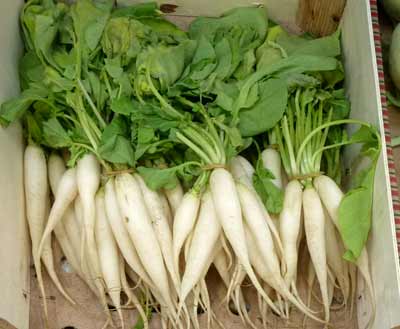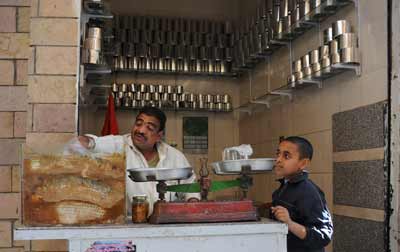
An Indian Ocean atherine which has found its way into the Mediterranean through the Suez Canal. A marine fish, usually deep-fried, it is a small, silvery fish similar to the argentine. When tiny it is treated in the same way as whitebait. This fish grows up to 18 cm.

Taro. Colocasia. A plant grown both for its leaves and tuberous, potato-like roots, or corms. The roots, the flesh of which may vary from white to pink, have a delicate flavour and can be peeled and boiled, roasted, mashed, fried or included in a stew.e flesh of which may vary from white to pink, have a delicate flavour and can be peeled and boiled, roasted, mashed, fried or included in a stew.
Common in Egypt, this is a soft white salty cheese made from buffalo or cow's milk eaten fresh or aged for up to three months.
A cross between a pizza and a pancake which may be either savoury or sweet. They are made with warqa, the amazing fine pastry of these regions, and may have any of a number of stuffings, including cheese, minced (US: ground) lamb, peppers, or whatever is available, or curds, jams or dried fruits.

Radish. This may refer to either daikon radish - the long white version, or to the small round red ones.

Mullet dried in the sun and then salted. Described by many as putrid, nonetheless, this, with melouha, is a great Egyptian speciality. It is traditionally eaten during Sham El Neseem ("Smelling the Breeze"), a spring festival. However, poor methods or preparation have led to deaths, including Baldwin I, King of Jerusalem. It is soaked in markets, ready for use, and then tinned. The dangers lie both in the putrid fish and in the poor quality tins which are often caked with rust. The fish is tinned before your eyes.